The color temperature of lights in our homes is always a choice based on our personal preferences. There are various options for white light, such as 2700K, 3000K, 4000K, 5000K, and 6000K are all popular color temperatures for home lighting.
Today, LEDs are the most effective solution for modern commercial and residential lighting. And color temperature (unit: kelvin/K) is one of the key factors you should look for when selecting LEDs.
Kelvin color temperature is used to measure the temperature of light as well as warm and cold tones. While it can be simply described as the appearance of light, 2700K and 3000K are warm, 7000K is cool, and 6000K is similar to natural daylight.
As two similar color temperatures, only 1000K Kelvin value between 4000K vs 5000K, how to choose 4000K light and 5000K light? This is the main purpose of this blog.
What is 4000K?
We usually regard 4000K as a transitional or neutral color temperature, where 3000K warm white begins to shift to bright white, and the yellow tones in the light are gradually reduced.
But 4000K still has a warmer light color. 4000K color temperature strikes a good balance between warm white and cool white.
4000K Lighting Applications
4000k light can be used in any space in a commercial or home, it is suitable for use where you are looking to create a bright yet comfortable environment, especially if you don’t want to have any blue light.
- Kitchens – 4000K lighting is also perfect for kitchens. We always pursue a comfortable atmosphere in our home. 4000K light can make you feel energized and focused on your tasks without over-straining your eyes.
- Offices – The lighting intensity affects our brains. Using 4000K lighting in the office makes employees stay fully focused and alert while they do not become tired and irritable from constant exposure due to the warmer color temperature of 4000K LEDs. 4000K lighting balances a relaxing and energetic atmosphere, making it ideal for office lighting.
- Retail stores – Retail store lighting should be on the neutral side so that items in the retail store look as vivid and real as they do in natural light. 4000K lighting creates a comfortable and inviting environment for the retail store, which is more attractive to customers.
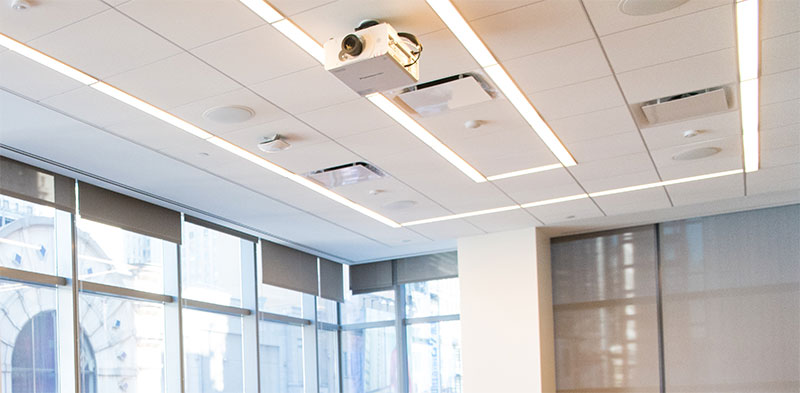
What is 5000K?
We associate 5000K with daylight. But in fact, 5000K still appears warmer in color compared to real daylight.
Daylight behaves differently at every time of day and in every weather, so do not just consider 5000K lights as daylight, you need to know more.
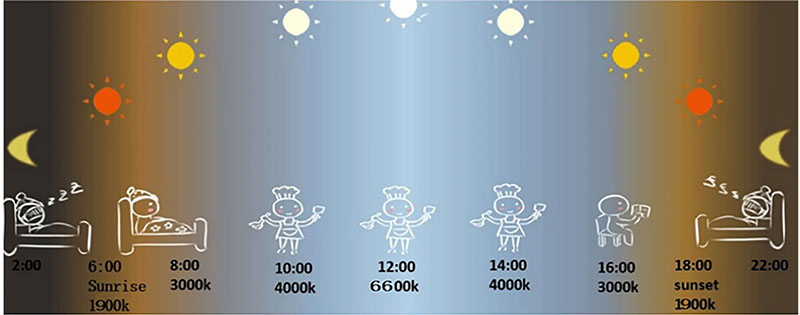
Do 5000K LEDs Appear “Blue”?
Based on the chroma and spectrum of 5000K LED, you can see that 5000K lights do not appear particularly blue, its color point is in a warm range and the light spectrum is very uniform.
However, why do you think 5000K light is blue? This is because, in contrast to a warm ambient light, 5000K light will give an impression that it is blue in color.
For example, if you turn on the 5000K light in your home at sunset, you may think it emits a blue color. But in fact, 5000K lights do not emit a particularly pronounced blue light.
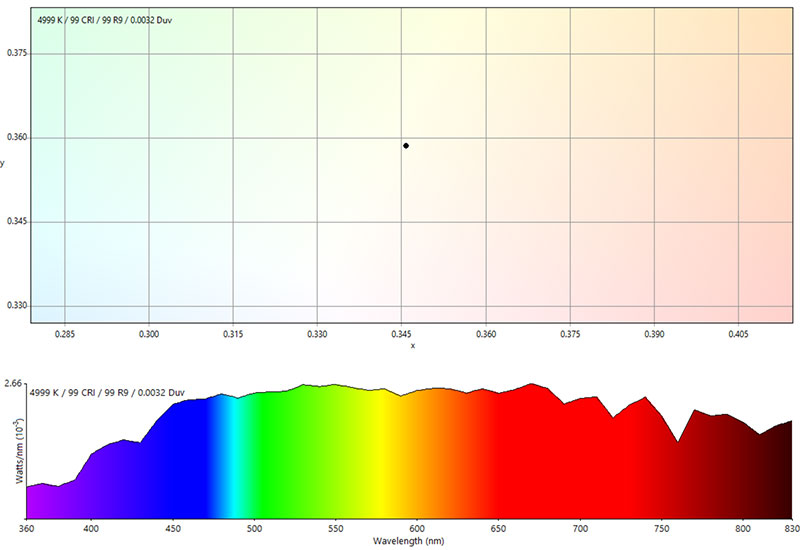
5000K Lighting Applications
5000K lighting is often chosen for commercial spaces and professional workplaces because of its similarity to sunlight and its greater clarity.
- Workshops and Warehouses – It is required to use 5000k and higher color temperature lighting in the warehouse. 5000k lighting keeps workers focused and ensures the visibility they need while working. This helps to avoid accidents and get the job done correctly.
- Sports Stadiums – 5000K lighting is suitable for sports stadiums as it provides appropriate brightness for outdoor games. In fact, it is the color of choice for sports lighting. 5000K light enables HD cameras to pick up the smallest movements and details, which will ensure that the viewers don’t miss any action.
- Showrooms and Galleries – 5000K lighting provides color contrast for art galleries and showrooms, even very small details can be clearly highlighted. It is best when you want to view the true color of artwork or artifacts.
- Hospitals and Healthcare Facilities – Hospitals, clinics, and other medical facilities need bright white light to allow doctors and medical personnel to understand their surroundings and see what they are doing. This makes the crisp, clear 5000K lights perfect for such locations.
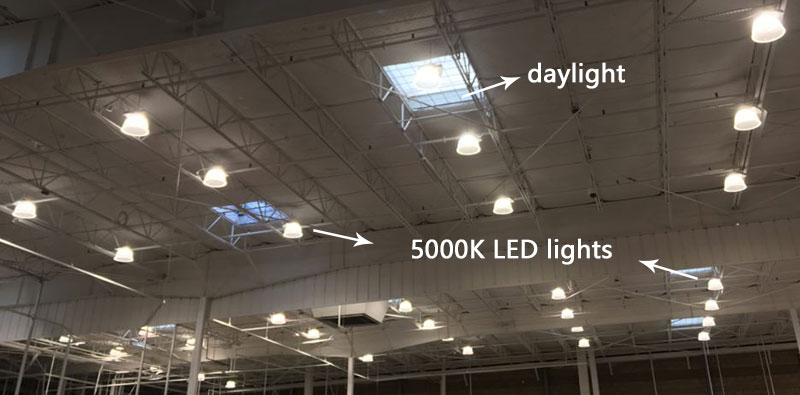
4000K VS. 5000K
There is always confusion about color temperatures that are only slightly different, like 4000K vs 5000K.
You can barely tell the difference between a 4000K LED bulb and a 5000K bulb immediately unless you use a photometer to measure it in real-time. However, if you lay them out together, you will notice some minor differences.
In the picture below, the banana, potted plant, countertop, and tile are noticeably warmer under 4000K lighting. On the contrary, these objects have a much sharper appearance under 5000K lighting.
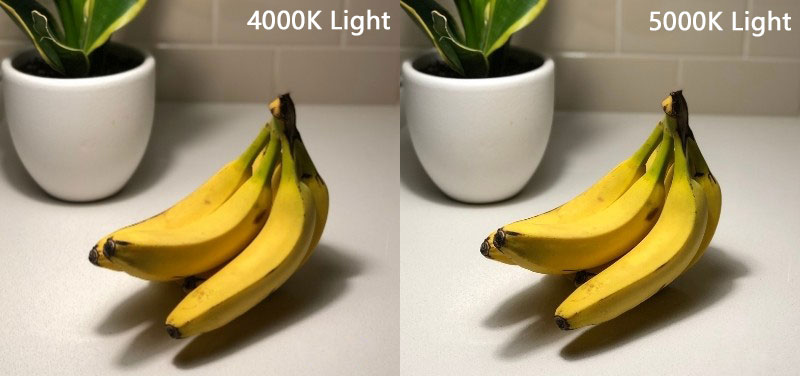
Both 4000K and 5000K are specific Kelvin color temperature values. Each Kelvin color temperature has a unique white light color, and the same is true for 4000K versus 5000K.
The smaller the value of Kelvin color temperature, the warmer the LED light color; the higher the value, the cooler the LED light color. So 5000K is colder than 4000K, which contains very little visible yellow light. And 4000K is warmer and more yellow than 5000K.
4000K color temperature is similar to natural light in the morning or afternoon, and this color temperature light color with a yellow tint makes offices and retail stores more accessible.
5000K color temperature, on the other hand, is closer to the less bright or warm midday sun, it allows for greater clarity, so you can often see this type of light in showrooms and art galleries.
See the table below for a full understanding of the difference in color temperature between 4000K and 5000K:
| Light Color Temperature | 4000K | 5000K |
| Appearance | Natural white, neutral | Daylight, bright |
| Lighting Color | Transition color temperature Balance cool and warm Similar to natural light in the morning or afternoon | Close to a less bright or warm midday sunlight |
| Mood | Comfortable, alert | Alert, focus |
| Applications | Kitchens, offices, retail stores, living areas | Workshops and warehouses, sports stadiums, showrooms and galleries, hospitals and healthcare facilities, TV studios and theaters |
Summary
4000K vs. 5000K can simply be thought of as slightly warmer white light vs. brighter white light. The biggest difference is the light color and the feeling it gives.
4000K Is More Suitable For Residential Spaces
Warm color temperature lighting is more preferred by homeowners, so if you’re choosing LED bulbs for your living room or other rest areas, 4000K is a better choice.
5000K Is More Suitable For Workspaces
Work and tasks need a bright and clear lighting environment with high color reproduction, so 5000K is the best choice for task lighting and is perfect for garages and basements.
FAQ
For more information about LED color and color temperature, you can read:
Soft White Vs Daylight – What’s The Difference?
3000K VS 4000K – Here To Know The Difference
Color Difference Between Warm White, Daylight, And Cool White